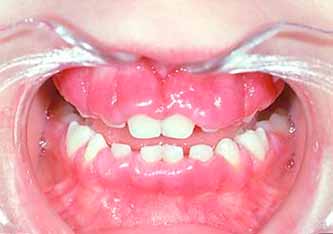
In the management of epileptic patients, dentists should take into account different drugs as possible causes for gingival overgrowth and warn for possible alternatives. In addition to phenytoin, also lamotrigine, oxcarbazepine, and phenobarbital were associated with increased prevalence of gingival overgrowth. DIGO can be caused by a number of disparate drugs ( Table 54.19 ), mainly phenytoin. Gingival overgrowth may be an adverse effect of various systemic. The prevalence of negative gingival effects is significantly. 4 Lederman et al were first to report its negative oral effects in 1984, and subsequent studies showed the prevalence of adverse effects varied from 14 to 83.

Conclusionĭifferent antiepileptic molecules may be related to gingival overgrowth. Gingiva Overgrowth Periodontal Pathology. Nifedipine is the most frequently implicated CCB in drug-induced gingival overgrowth (Figure 2 through Figure 4). The active drugs lamotrigine, oxcarbazepine, and phenobarbital were significantly associated with gingival overgrowth in 61%, 71%, and 53% of cases, respectively, and phenytoin, valproic acid, and carbamazepine in 50%, 44%, and 32% of cases, respectively.

Data were analyzed using Pearson's r correlation coefficient and chi-square test. Some affected individuals have overgrowth of the gums (gingival hyperplasia), an opening in the roof of the mouth (cleft palate), or a split in the upper lip (cleft lip).Problems with bone development in the torso (thorax) commonly leads to bone abnormalities such as two or more ribs that are joined together (fused) or ribs that are abnormally. Patients taking the same antiepileptic therapy for at least 1 year and meeting the inclusion criteria of the study (n = 162) were subjected to measurement of gingival overgrowth according to the modified Harris and Ewalt classification and O’Leary's plaque control record (OLR). Methodsĭata were collected from 213 subjects of both sexes, from 5 to 80 years. The effects of phenytoin on oral health have been explored in different studies, yet little information is available on other antiepileptic drugs. We report that significant improvement in gingival overgrowth can occur with basic periodontal treatment, surgery and sustained intensive follow-up without adjusting calcium channel blockers.Our aim was to estimate the prevalence of gingival overgrowth (hyperplasia) and to determine whether active molecules affect the severity of overgrowth in a group of epileptic patients. Keep in mind that the abbreviation of GO is widely used in industries like banking, computing, educational, finance, governmental, and health. His periodontal scores improved when he resumed treatment. If you are visiting our non-English version and want to see the English version of Gingival Overgrowth, please scroll down to the bottom and you will see the meaning of Gingival Overgrowth in English language. Nifedipine was resumed during periodontal treatment when the patient’s hypertension worsened. Gingivectomy was performed on the areas of hard fibrous swelling.

With his physician’s consent, nifedipine was discontinued during his treatment for periodontitis, which consisted of oral hygiene instructions and scaling and root planing on all areas. The patient had been on nifedipine (40 mg/day) and amlodipine (10 mg/day) medication for 5 years. We report the case of a 66-year-old Japanese man with hypertension and type 2 diabetes mellitus who was diagnosed with severe periodontitis covering almost all the teeth. While controversial, management includes discontinuing the calcium channel blocker. Gingival overgrowth is a common side effect of calcium channel blockers used in the treatment of cardiovascular diseases.


 0 kommentar(er)
0 kommentar(er)
